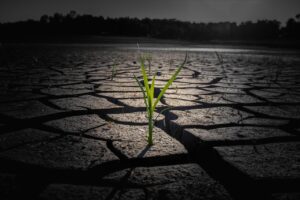
Climate change is already an undeniable reality, with extreme events such as prolonged droughts, catastrophic floods, and record-breaking heatwaves affecting communities around the world. Given this scenario, climate resilience emerges as an essential concept, encompassing both adaptation (adjustments to reduce vulnerabilities) and resilience (ability to recover after impacts). This article explores how governments, businesses, and individuals can prepare for climate challenges, highlighting effective strategies, innovative technologies, and public policies that are shaping a future that is more resilient to the effects of climate.
What Is Climate Resilience and Why Is It Crucial?

Climate resilience goes beyond simply responding to disasters; it’s about anticipating risks, strengthening infrastructure, and ensuring that ecosystems and societies can adapt to irreversible change. While mitigation (reduction of greenhouse gas emissions) seeks to combat the causes of global warming, adaptation deals with the inevitable consequences. An IPCC report (2022) warns that, even if the world achieves the goals of the Paris Agreement, some climate impacts are already irreversible, making resilience an urgent need. Coastal cities, for example, need planning against rising sea levels, while rural areas must develop adaptive agriculture to deal with droughts and pests.
Adaptation and Resilience Strategies in Different Sectors

Climate resilience requires coordinated action on multiple fronts. In the urban sector, solutions such as green infrastructure (vegetated roofs and walls), sustainable drainage, and stricter building codes reduce flooding and heat islands. Singapore, for example, has become a benchmark in resilient urbanism with its rainwater harvesting system and parks that act as retention basins. In the field, techniques such as agroforestry, cultivation of climate-resistant varieties and smart irrigation help farmers maintain productivity even in adverse conditions. In the business sector, companies are adopting climate risk analysis in their supply chains, investing in clean energy and developing contingency plans for extreme events.
Technologies and Innovations That Drive Resilience

Technological innovation is accelerating adaptability. IoT (Internet of Things) sensors monitor soil quality and water availability in real time, allowing rapid responses to droughts. Artificial Intelligence predicts natural disasters with greater accuracy, while early warning systems save lives in regions prone to hurricanes and tsunamis. Advanced building materials, such as pervious concrete and reflective coatings, reduce damage in storms and heat waves. In addition, nature-based solutions — such as mangrove restoration for coastal protection — combine traditional knowledge with modern science for effective and sustainable outcomes.
The Role of Public Policies and Global Cooperation

No country or community can tackle climate challenges alone. Robust public policies are key, from the inclusion of resilience criteria in master plans to financial incentives for adaptation projects. The UN’s Green Climate Fund (GCF) has already allocated billions of dollars to initiatives in vulnerable nations, such as flood barriers in Bangladesh and efficient irrigation systems in sub-Saharan Africa. However, there are still gaps: many developing cities lack the resources to implement preventive measures, and political conflicts can delay urgent action. International cooperation, through agreements such as the Glasgow Climate Pact, is vital to share knowledge, technology and finance.
How Individuals and Communities Can Contribute

Climate resilience also starts at the local scale. Communities can organize themselves into disaster response groups, promote the conservation of local ecosystems, and adopt sustainable practices such as rainwater harvesting and reforestation. At the individual level, measures such as choosing renewable energy sources, reducing water consumption, and supporting environmental policies make a difference. Education and awareness are equally important: understanding region-specific climate risks allows people to better prepare, whether it’s stockpiling supplies for emergencies or attending first aid training.
Conclusion
Climate resilience is not an option, but a necessity for a changing world. While mitigation tries to curb climate change, adaptation and resilience ensure that societies can survive and thrive despite it. Governments, businesses, scientists, and citizens all have complementary roles to play — and the time to act is now. Investing in smart infrastructure, technological innovation, and global cooperation will not only reduce economic and human losses, but also create opportunities for fairer and more sustainable development.

Sem comentários